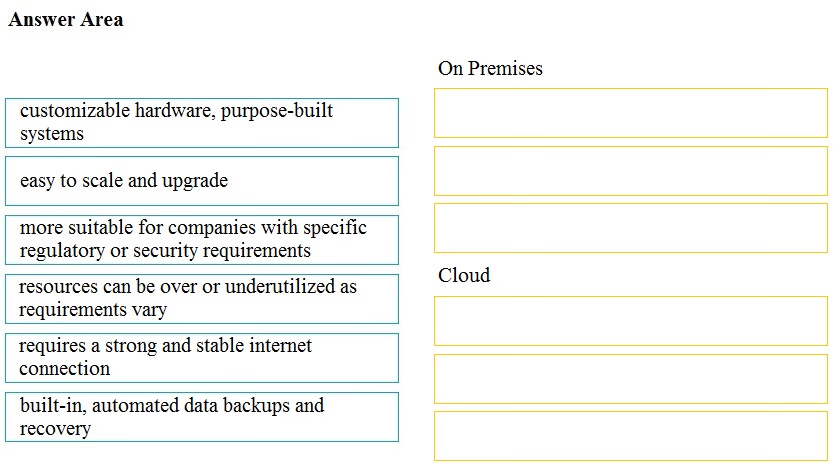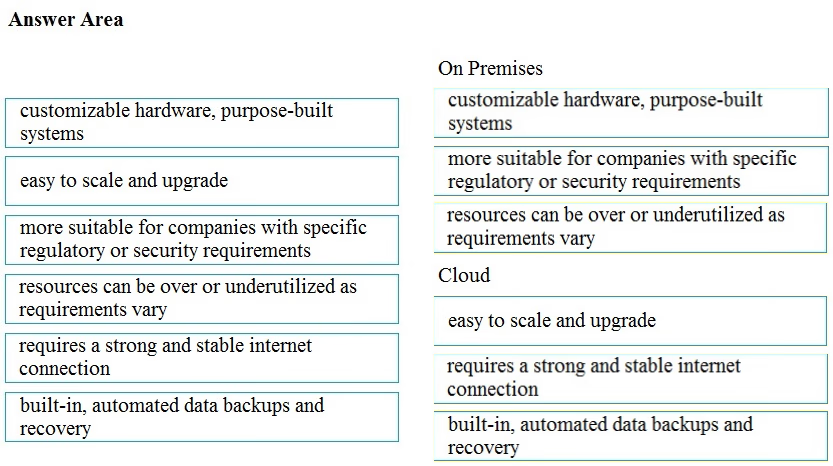DRAG DROP -
Drag and drop the characteristics from the left onto the appropriate infrastructure deployment types on the right.
Select and Place:

DRAG DROP -
Drag and drop the characteristics from the left onto the appropriate infrastructure deployment types on the right.
Select and Place:


How does QoS traffic shaping alleviate network congestion?
QoS traffic shaping alleviates network congestion by buffering and queuing packets that exceed the committed rate. This helps smooth out bursts in traffic, allowing for more consistent data flow and preventing packet loss. Traffic shaping ensures that packets are held in a queue and sent out in a controlled manner when the network has the capacity to handle them. This is different from traffic policing, which would drop packets that exceed a certain bitrate, and other mechanisms such as packet fragmentation or random packet dropping from lower priority queues.
An engineer is describing QoS to a client.
Which two facts apply to traffic policing? (Choose two.)
Traffic policing involves monitoring the data rate of a traffic flow and taking action when the rate exceeds the defined threshold. This action often includes dropping packets, thus policing drops traffic that exceeds the defined rate. Additionally, it is most effective and efficient to perform policing as close to the traffic source as possible in order to prevent excessive traffic from entering the network core and to manage bandwidth more effectively.
Which component handles the orchestration plane of the Cisco SD-WAN?
The component that handles the orchestration plane of the Cisco SD-WAN is vBond. vBond is responsible for authenticating the vSmart controllers and the SD-WAN routers, orchestrating connectivity between them. It is designed to be the first point of contact for SD-WAN devices and facilitates mutual discovery and initial authentication. Therefore, vBond is the correct answer.
What are two device roles in Cisco SD-Access fabric? (Choose two.)
In Cisco SD-Access fabric, the Edge Node is a device that connects endpoints to the fabric network and serves as the entry point for user traffic. The Border Node is responsible for connecting the SD-Access fabric to external networks and handling traffic entering and leaving the fabric. These roles are crucial for the proper functioning and management of the SD-Access environment.